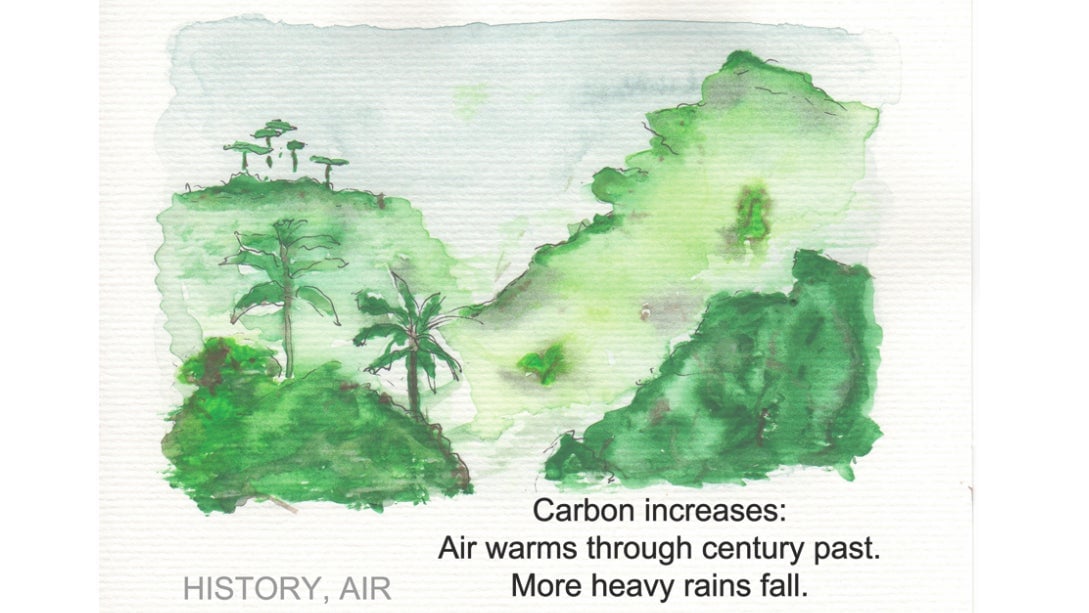The next time you want to explain something complicated, write a haiku instead
People love to read about science. But scientists, no matter how well-intentioned, can be notoriously difficult to understand when they attempt to communicate their research.


People love to read about science. But scientists, no matter how well-intentioned, can be notoriously difficult to understand when they attempt to communicate their research.
In a new paper, a group of academics and teachers suggest there’s a simple way to better communicate science to the public: Create more science poetry. The idea may also be a novel option for anyone who’s ever struggled to explain their line of work to friends, relatives, or puzzled dinner-party companions. Since we often get stuck in the jargon specific to our fields, writing poetry can be a great way to crystallize ideas—as much for ourselves as for others.
The stereotypically dry, cold language of science papers isn’t intuitively welcoming, or even scrutable, to the average reader. Take, for instance, this week’s climate-change report from the Intergovernmental Panel on Climate Change (IPCC). The report contains crucial information about what it would take for the world to keep global warming to a modest 1.5°C. But it’s roughly 1,000 pages, and has sentences like, “Most CDR options face multiple feasibility constraints, that differ between options, limiting the potential for any single option to sustainably achieve the large-scale deployment in 1.5°C-consistent pathways.” It’s clearly not meant for a non-expert reader.
That’s where poetry comes in. The paper, published in the journal BioScience, includes examples of how science poetry, especially haikus, have been successfully used to communicate science findings out to general audiences. Oceanographer Gregory Johnson, for example, wrote and illustrated a series of science haikus to summarize the 2013 IPCC State of the Climate report, and has written haikus for all subsequent State of Climate reports.
The authors point out that short haikus, or found poetry from research papers, “offer a way for scientist to play with language, to reframe concepts, and to engage with aesthetics to capture readers in ways that are not possible with scientific articles.” The poem may draw a reader in, piquing their interest to learn more.
That’s the idea behind Conservation Haiku, a blog started by some of the paper’s coauthors, which posts science haikus along with more detailed explanations about the subjects of each haiku. Also, the authors point out, poems describing a concept can often be more compelling than a traditional definition (paywall)—these 119 haikus about the Periodic Table of Elements are a great example—and they can deepen the writer’s own thinking on the topic.
Whatever your field, you may also benefit from using poetry as a way to get your ideas out to the public. Based on several exercises the paper’s coauthors have developed through their own workshops, here are some tips for getting started.
- Think about what topic, idea, or experience you’d like to distill into a poem. Jot down notes about your thoughts, memories, or feelings: what words or phrases do you associate with this subject? Avoid editing yourself, and keep going until you feel like you’ve got enough to start working on a poem.
- Examine your notes for gems: vivid descriptions, striking turns of phrase, or exciting ideas. Circle what strikes your fancy; the authors call these your “seed” ideas.
- Start writing whatever comes to mind based on your seed ideas. You may find patterns emerging from those seeds, which you can explore, or you might find that some seeds are dead ends—that’s fine. Again, just keep going, and try not to edit yourself.
- If you’re feeling stuck, take a break. Let the words sit for an hour, or a day, and come back to them. You may even find you have new ideas when you return to an unfinished project.
- Edit your work, doing your best to clarify the idea or feeling you want to convey. And, of course, make sure it fits the constraints of the form you’re trying to achieve (e.g., a haiku or sestina).
And if you’re in need of a little more inspiration, here are a few science haikus to get your creative juices flowing. Happy writing!